First of all, I would like to thank SMZDM for trusting me. As a friend who has never used SMZDM's test products before, the first time the winning bid was actually such a project, I felt even more excited about myself. The responsibility is greater. How to write a test that makes the majority of valued friends and Aunt Zhang happy, and to provide some useful and useful consumer information, from the beginning to the present, all of them are kept in the mind to repeatedly recall.
After considering it for a long time, I decided that the assessment report should be divided into the following sections. The first is the opening part, which is almost a must for all new products. Since the new home has already installed an independent AV room and had previously had experience with SMZDM, the ideal performance of the projector was evaluated in the ideal environment of the AV room, and the projector was installed with Sony HW40ES projection. Machine to do AB contrast, help to make the value of the majority of Friends of the meter's true picture quality has a perceptual knowledge. Then for the positioning of the projector, convenience and ease of use is also one of the selling points of the projector. The debugging and installation part must have a more detailed description. In the above two test items, some theoretical knowledge analysis of projectors will be interspersed, which will help us to understand the principles and characteristics of such micro-projections in depth. The final test is to test the specifics of the large-screen projection (200 inches) and typical applications (bedroom night use). In general, let everyone fully understand the actual performance of the projector at the same time, more is to let everyone understand the true feelings under various applications. Do not talk nonsense, enter the topic!
Unpacking articles
Unpacking site was selected in the video room. The spatial layout and equipment of the audio and video room are explained in detail in this article.
Http://post.smzdm.com/p/312880
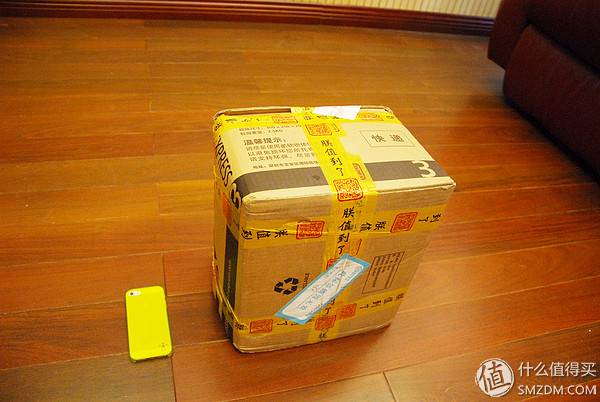
The projector's packaging, Sao Hong's "value" tape is the characteristics of SMZDM. Compared with the size of iphone5s, it can be seen that this package is not large, it is presumed that the entire projector is also very small.

Compare the volume with the subwoofer. Well, yes, it's quite small. It is estimated that this volume is suitable for the bedroom.

Unboxing it! It can be seen that the thick air bag protects the projector's packaging. What is the small white box above?
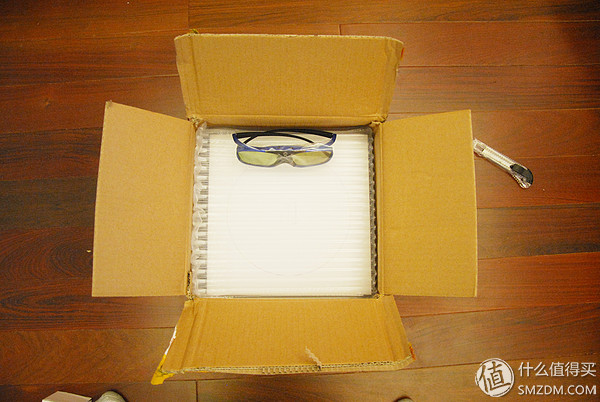
Is 3D glasses, and the value of friends before the sun Zimi glasses Z3 glasses are the same, shutter-style, need to charge. Lens is still relatively large, for my four-eyed user, no doubt increased comfort. However, because it is DLP link technology glasses, and 40ES glasses can not be common, slightly sorry.
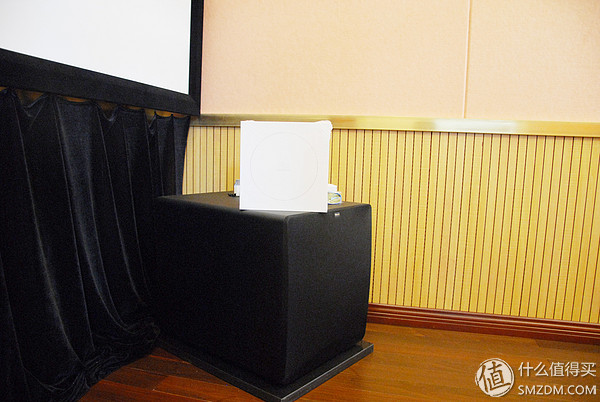
The projector's box is white. I don't know if it is a gust of wind that Jobs has brought. Anyway, emerging technology companies like this color and texture. Take out the projector's box and compare it with the subwoofer. Compared to real home theater equipment, this volume is really cute.
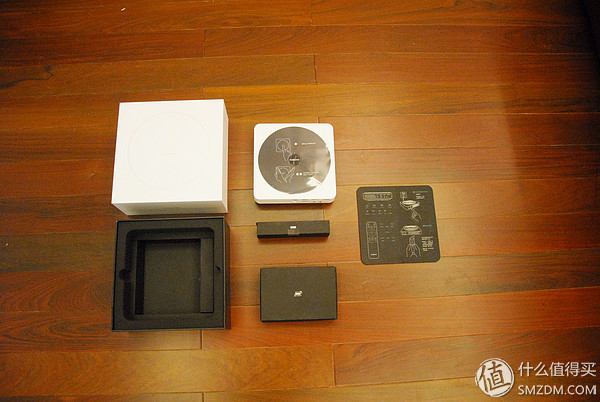
Open the white box, in turn remove the projector host, simple instructions, remote control tray, power adapter tray, because it is the public version, and does not come with Mango TV's annual card. It can be seen that the entire packaging is still very careful, but also quite a sense of design.

The projector was taken out and there was only one machine so thin that the harman/kardon logo was printed in front of it. According to the product introduction, we know that this small projector contains a harman/kardon-certified speaker. Now that it doesn’t say what the effect is, this kind of micro-casting I think should join the speaker, because many times his use is not Together with the home theater system, the addition of a single speaker improves convenience.
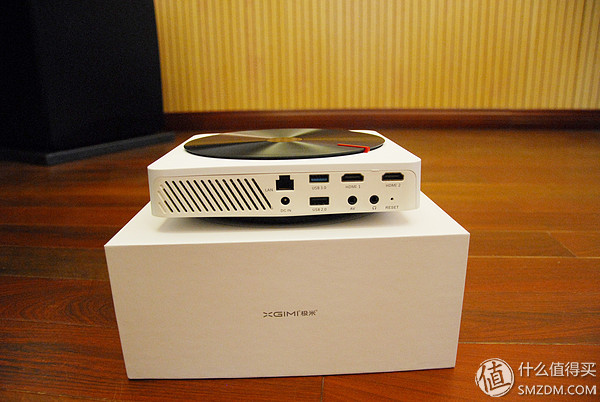
On the back of the projector, what HDMI, USB3.0, network cables, etc. are now common connectors, nothing to say.
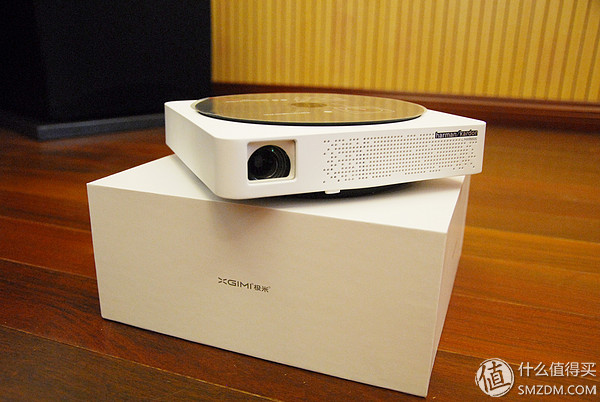
Open the sliding lens cover, a small lens is exposed, this lens does not have any manually adjusted zoom and focus ring, zoom and focus need to rely on the remote control.
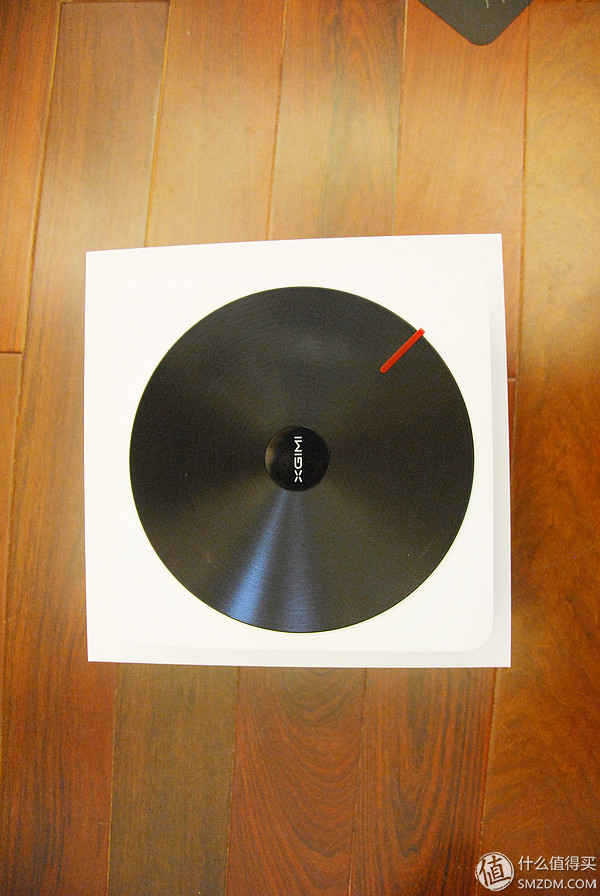
The top surface of the machine mimics the textured texture of a vinyl record. The red part is the indicator light, which flashes when the remote control is operated and the manual sensing operation is performed.
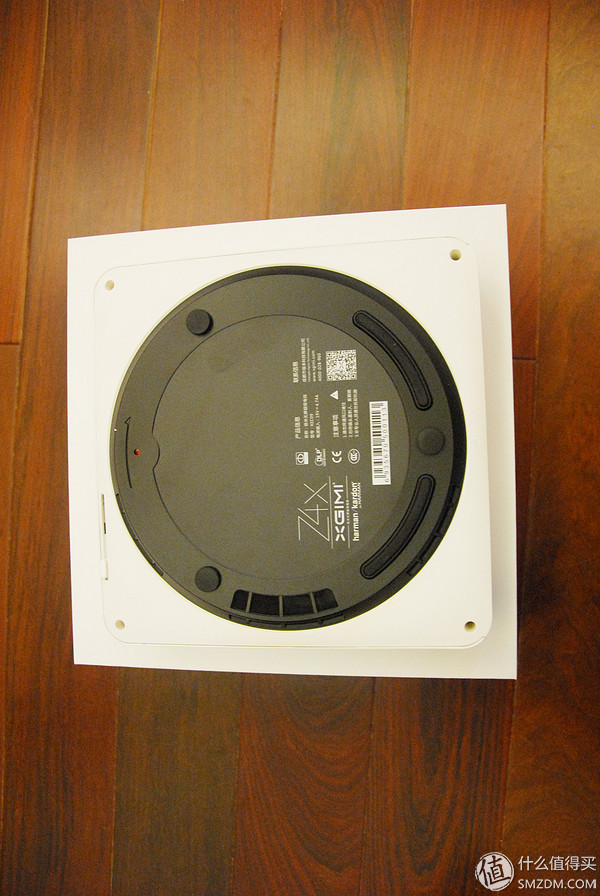
The bottom of the machine. We can see the logo of DLP technology, but the question is, why does this Z4X model not have a tripod mounting screw interface?
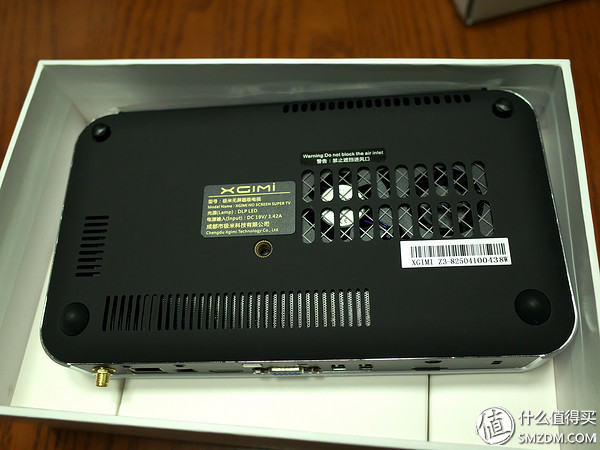
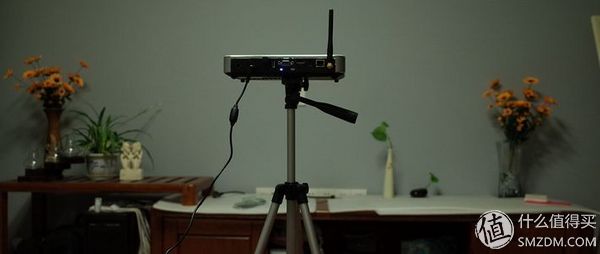
The evaluation of the user Z3 I saw earlier is like this. The tripod hole on the bottom is a convenient thing.
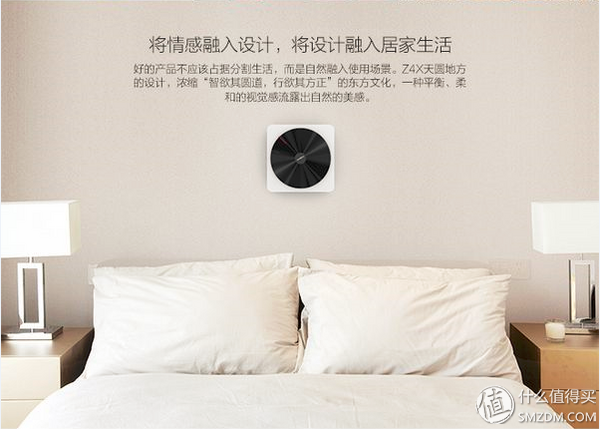
This picture on the official website, I did not figure out how this machine is so hanging on the wall, how to use the projection lens is facing the screen. Isn't there a hanging rack?
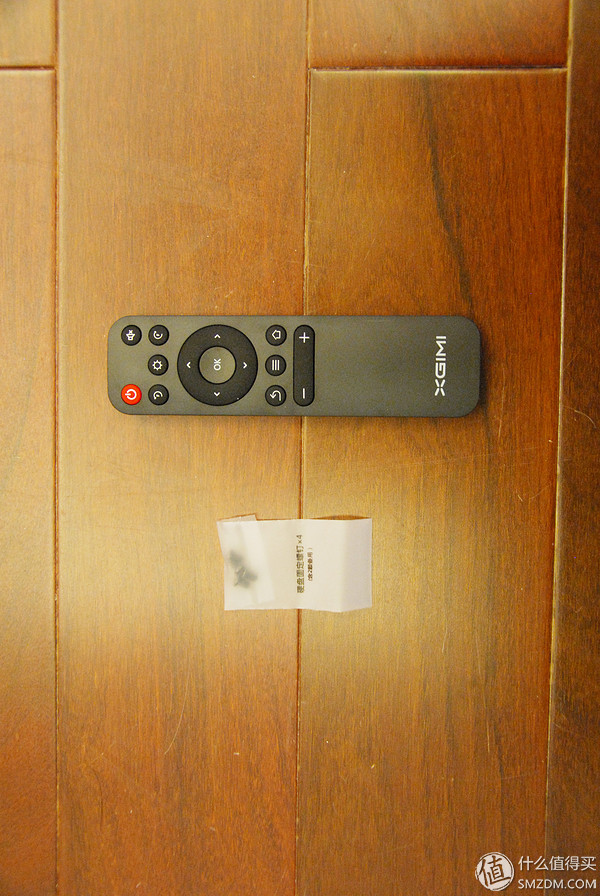
The box of the remote control is opened, and there are hard disk fixing screws. It reminds us that this machine can use a built-in hard disk to broadcast the program source. The design of this remote control has no characteristics. What TV boxes of Xiaomi and LeTV are all the remote controls of this appearance. It is easy to get wrong in a dark environment. However, the remote controller is not based on the infrared principle, which means that you do not need to aim at the projector to perform remote control. This is better. After all, it is impossible for the projector to face the user. The limitations of the infrared remote control are very limited. Big.

The power box is opened. This is a power adapter similar to a laptop. The label is Hangjia. It seems to be a famous brand. But don't be too happy. The biggest bug is here! !
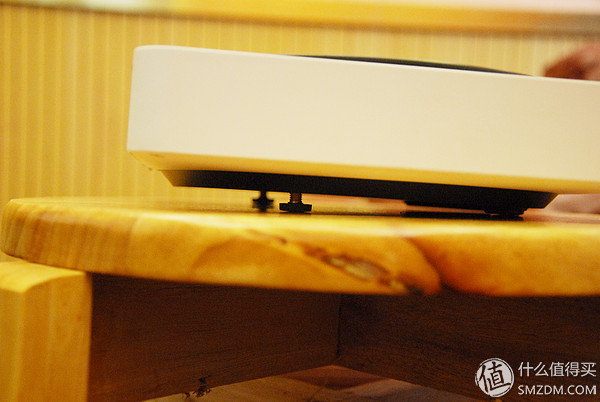
Since this machine does not have a detailed manual telling us how to install the hard disk, I checked some of the others' assessments on the Internet and found that the secret lies in these three mats. You can adjust the machine level and elevation angle, but this adjustment is too...

OK, completely unscrew the three screws, and rotate the entire bottom case clockwise, exposing the green indicator, and the machine can be turned on.
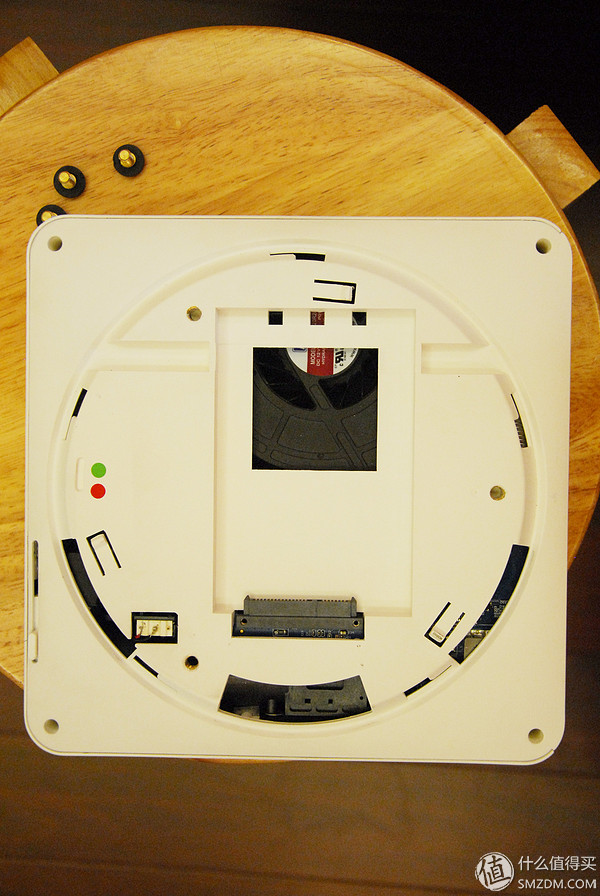
This picture shows the installation slot of a 2.5-inch hard disk. At the same time, you can see a part of the light engine on the left side of the hard disk slot, and a cooling fan underneath.
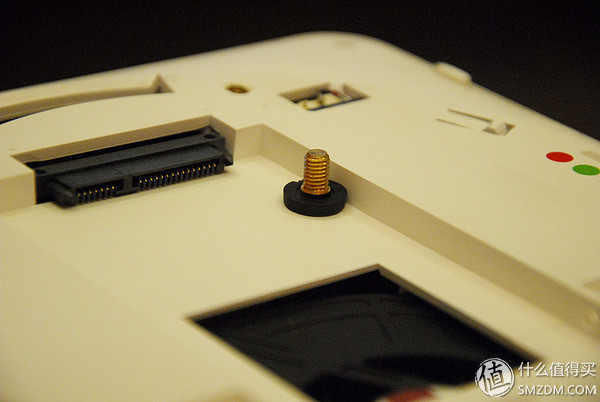
According to the preliminary judgment of this thickness, this hard disk slot can only put down the 7mm hard disk, it seems 2T's built-in movie library is not a game...
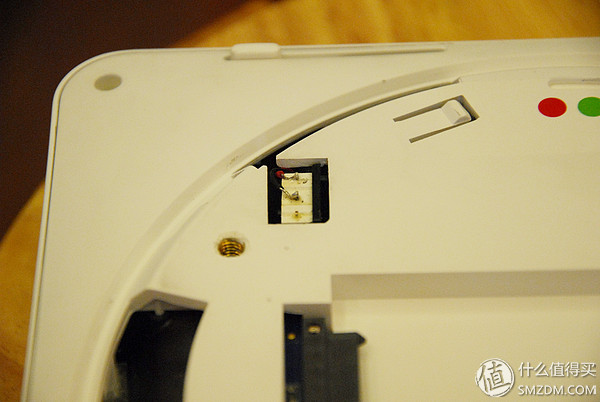
Huh? What is the connection of this solder joint? Anyway, it was very touching. This work made me burst into tears...
Actual performance test
Connect the meter Z4X to the second HDMI output of the Onkyo 838 amplifier, set the main+sub to output the 1080p signal, and connect the meter's power adapter to begin evaluation.
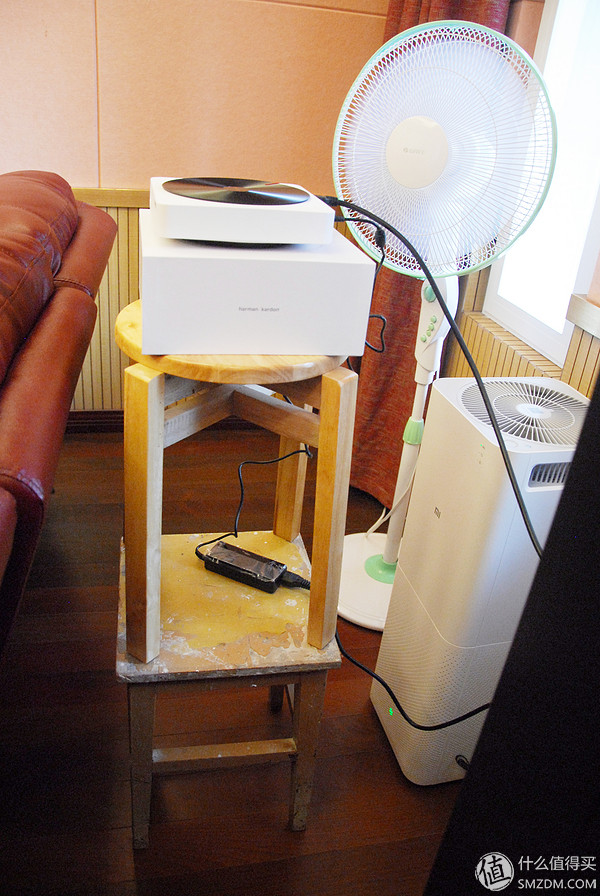
As you can see, there is no tripod mounting hole, so how difficult it is for me to set the position...
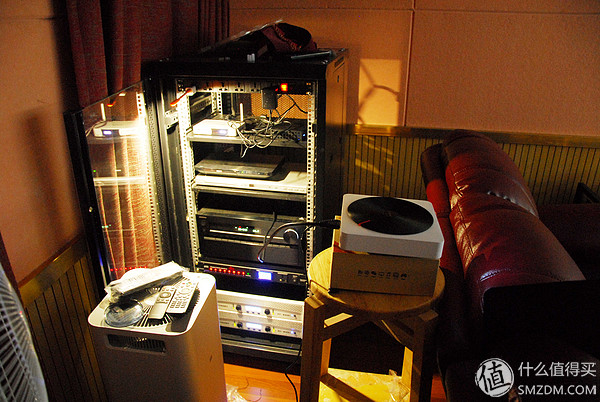
Turn off the lights and start testing immediately.
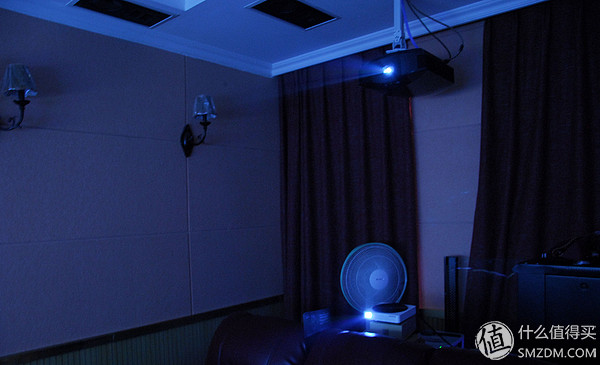
The following meters Z4X, the above 40S at the same time turned on! But when the picture has not yet been shown, I noticed a clear current in the three main channels in front. And the buzzing sound changes with the Z4X boot screen. I wondered, amplifier output is the HDMI signal to the Z4X, but not the Z4X decoded after the return of the sound, why there is such a large current sound. I returned to the back of the projector and found that the projector's power supply emitted the same current as the main channel, but also changed with the screen. And shaking the Z4X fuselage behind the power connector, the current sound has changed significantly. At the same time, my Z4X power supply is plugged into the PDU on the cabinet. It may be that current noise caused by the power supply of the projector is transmitted through the power supply to the power amplifier also connected to the PDU, resulting in current noise. I unplugged the power of the Z4X from the rack PDU and plugged into a wall of another wall. The result was similar to the current noise.
Since cabinet power supply and other wall power supply are two independent power supplies that are driven away from the air, noise is less likely to be introduced from the power cable. More likely is the incoming current from the HDMI cable. Taking into account the HDMI interface is relatively fragile, Onkyo's HDMI chip quality is also criticized as one of the places, so after the test I try to speed up the progress. Originally planned to use the Z4X to project a complete movie in the audio-visual room, but also because the current sound seriously affects the viewing and fear of clutter damage to the HDMI chip, and did not connect the Z4X to the amplifier for a long time.
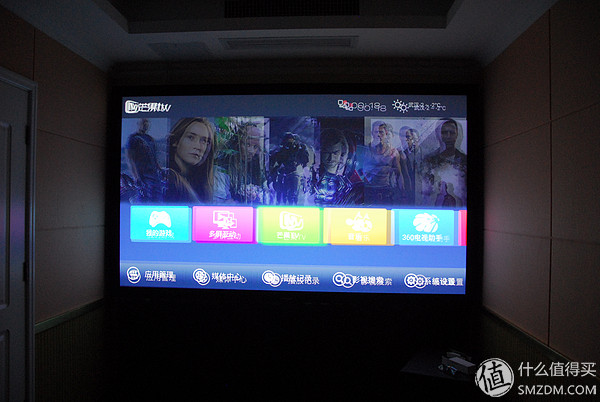
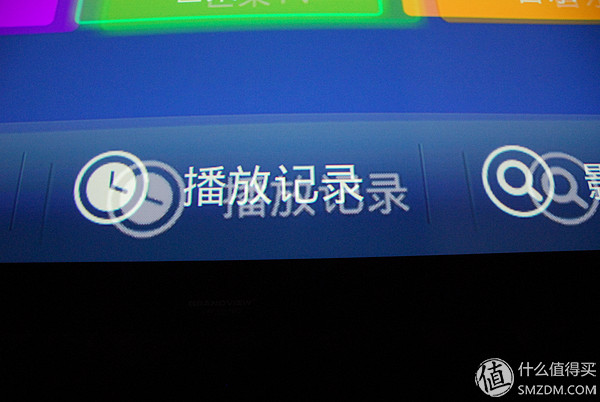
Both projectors are shown at the same time. For this picture, I debugged for a long time, because the polar Z4X does not support the lens zoom and lens shift, to be accurately projected on the 119-inch screen, plus can not use a tripod, use a cardboard slowly pad Z4X to adjust It took some time. Finally, it was found that the images shot by the two projectors could not be overlapped. The Z4X's screen seemed to stretch in the horizontal direction. However, after viewing the settings, I found that all the options were the default value “0â€. It may be that the Z4X converted the 1080p signal internally. Problem caused by 720p signal. Because the signal is degraded, it does not seem to affect the sharpness of the font. The following assessment is based on such adjustments. At the same time we can see that the brightness of the Z4X is not as good as that of the 40ES. By adjusting the camera shutter time later, we will have to expose similar images.
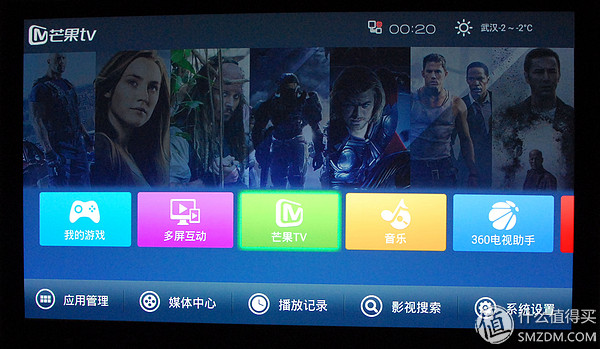
Sea Medi Q5's main page, 40ES projection screen.
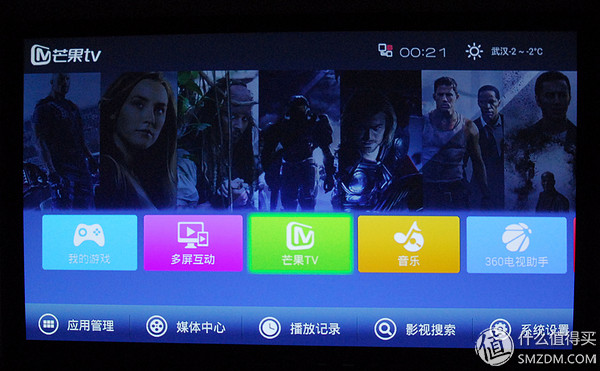
The same picture, this is the Z4X projected image. Since the brightness of the two projectors is not the same, according to the adjustment of the shutter value I found that when the shutter down 2/3 files, Z4X showed a picture with 40ES equivalent brightness. That is, the brightness of Z4X = 1-1/2 x 2/3 = 2/3 times the brightness of 40es. And my 40ES projector is open low light bulb brightness, reference picture settings, according to foreign test results, this time the output of 40ES brightness is only about 900 lumens, that is, the actual brightness of Z4X is about 2/3×900= 600 lumens, and the official report of 580 lumens data is very close. Therefore, I think here, although the Z4X brightness is not high, but there is no virtual target. This is worth commending. However, the gap between the color and sharpness of the main interface... Well, we continue to see that the following screens are the actual results of playing Blu-ray discs on a Blu-ray player.
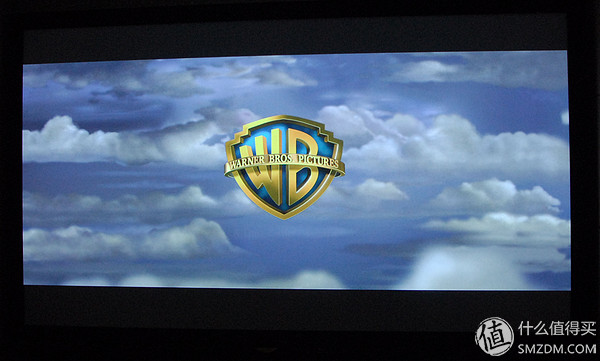
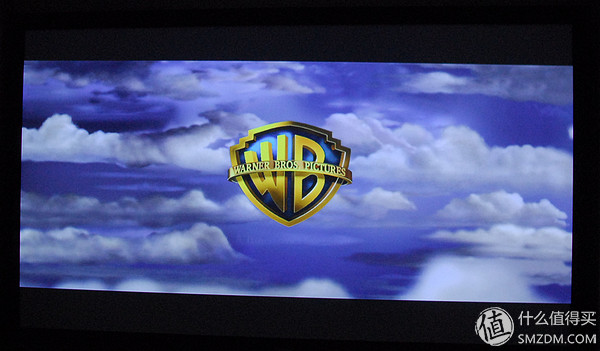
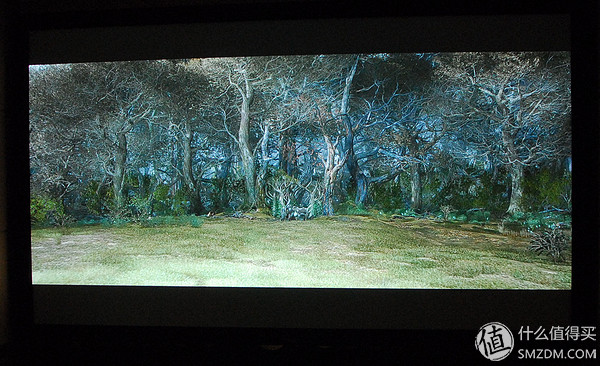
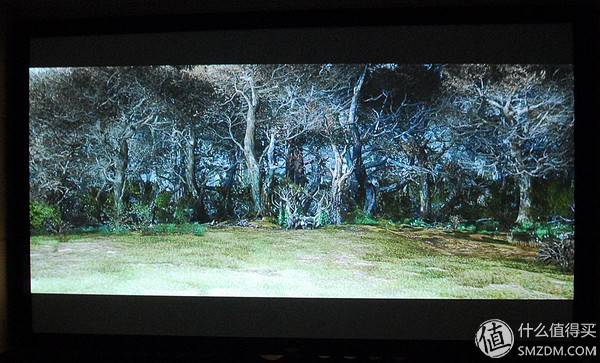
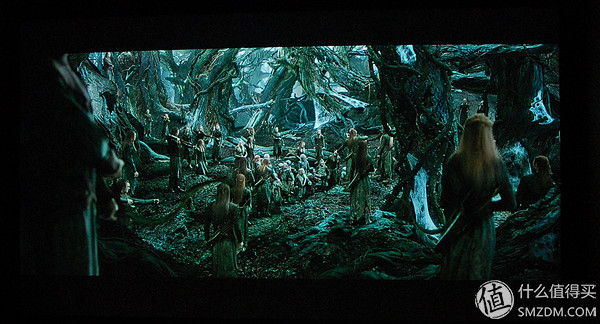
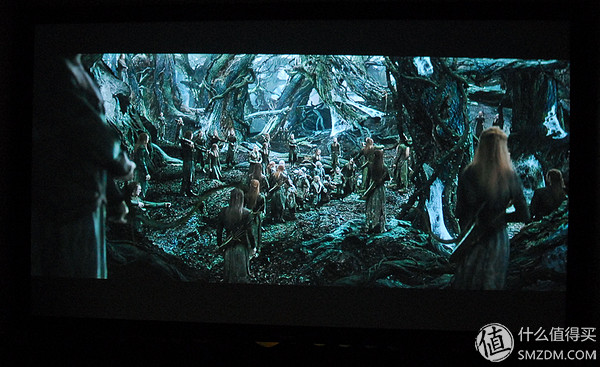

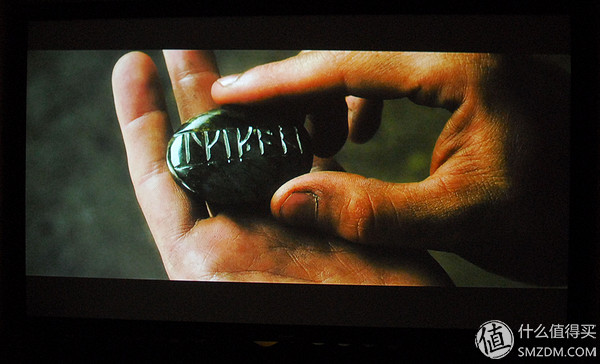
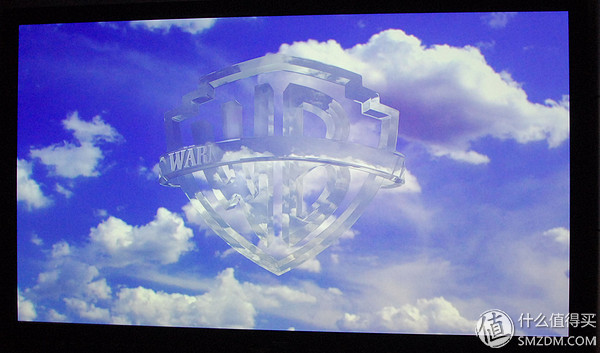
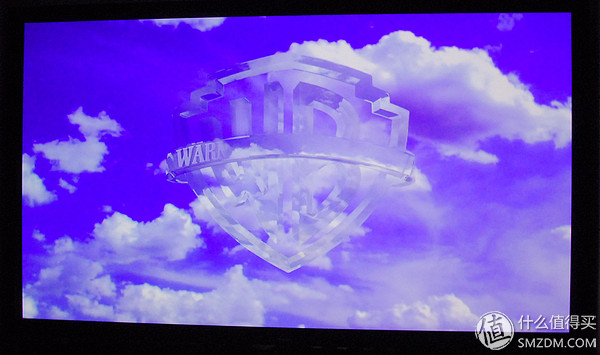

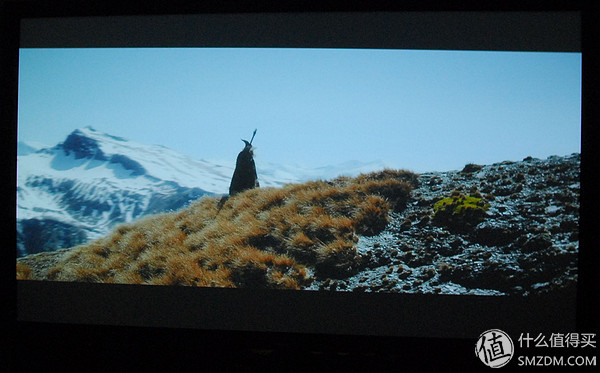

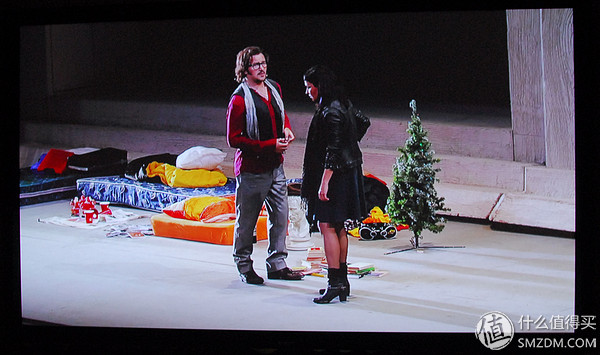
I no longer comment on the screen here, and everyone should be able to know which is the 40ES screen and the Z4X screen.
In general, the picture of the Z4X is darker and darker than the 40ES. The details are blurred. The details in the shadows are much less. At the same time, the detail in the highlights is lacking. However, these are problems that can only be seen in the case of comparison. If you look at the Z4X alone, the 119-inch sound screen movie screen is acceptable, and even the 3D screen will not appear too Hunan. However, in order to test the resolution limit of the Z4X, I connected the computer to the amplifier and output a document. The result is as follows.

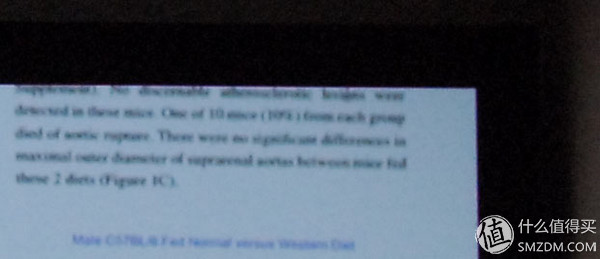
Both of these screens are shot at the rear of the projector with a wide-angle shot of the SLR, and then capture 100% of the corner screen. Without using me, Z4X's 720p physical resolution became a significant bottleneck and the text was completely indistinguishable. Therefore, it can be seen that if a Z4X projector is used to play a static picture with extremely high resolution, the effect will be very different from that of a conventional projector. Fortunately, the Z4X is positioned as a "super TV," which means that using this "TV" to play a static picture is not its own main attack range. We only need to focus on the effects of playing a movie.
Due to the current of the power supply, the idea of ​​watching a movie with the Z4X was planned and it was impossible to experience the full screen.
At the same time, the impact of the projector's noise on the viewing is also recognized by everyone. I use the decibel ultra app on IPHONE to detect the noise performance of the Z4X and 40ES under the same boot time. About 500px from the air outlet, other equipment in the audio-visual room was turned off. The software was used to detect noise. Using A weighting, the background noise of the audio-visual room was about 37 decibels, the Z4X noise was about 56 decibels, and the 40ES noise was about 49 decibels. Although the Z4X noise is much higher than 40ES on a numerical basis, it is significantly lower than the conventional DLP projector. Under the normal operating distance, the listening environment of the entire audio/video room has little effect. In this regard, I consult the relevant technical documentation.
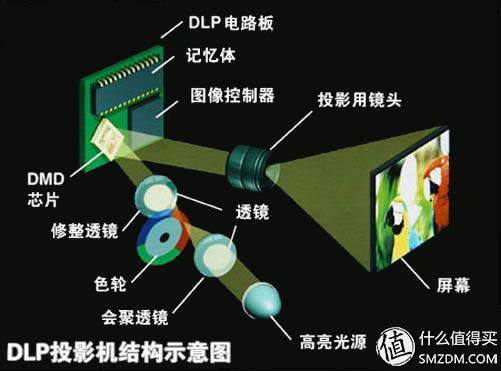
The principle of traditional projectors, such as what is worth buying this Raiders said, DMD chip itself is just a matrix of mirrors, do not have the ability to issue different colors, so the traditional home DLP projector must go through the high-speed rotation of the color wheel after the decomposition of the three primary colors The DMD chip is irradiated with sub-pixels that generate three primary colors to synthesize color images. This is why the noise of the DPL projector is generally larger, and when the power is turned off, although the cooling fan is still rotating, it is obviously felt that the noise is reduced a lot because the color wheel has stopped when turning off the light source.
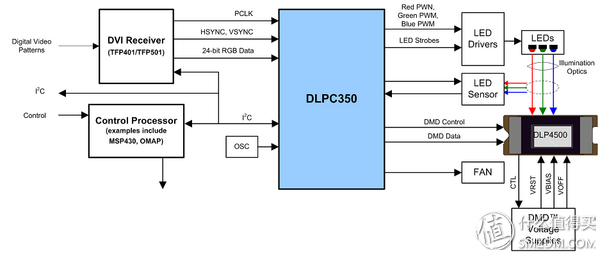
In this official Texas Instruments document, the pico projector does not rely on the three primary colors produced by the color wheel. Instead, it directly illuminates the three primary colors to produce three colors, and therefore does not produce high-speed rotation of the color wheel. Noise. At the same time, the mechanical parts are reduced, the size of the light machine is greatly reduced, and the reliability is enhanced. Provides technical support for portable DLP projectors.
Projector placement debugging
For this kind of projector, the manufacturer's meaning is more willing to locate "TV" than the "projector" for home theater applications. Therefore, in a less than ideal and strict environment, how to more easily project the correct picture is one of the important functions.
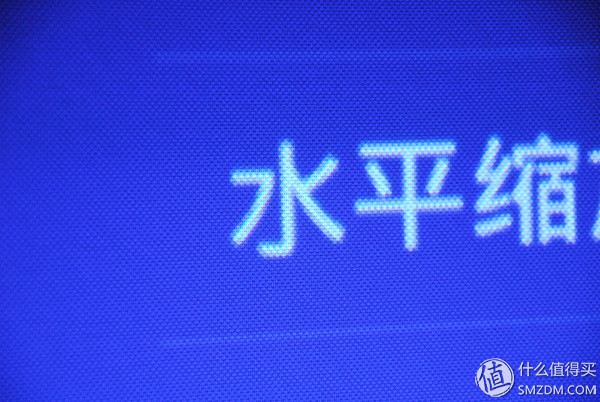
The Z4X projector uses electronically controlled optical focusing. Focus can be controlled remotely via the remote control. As shown in the figure, the accuracy of optical focusing is still very good, and the contours of pixels can be easily resolved.
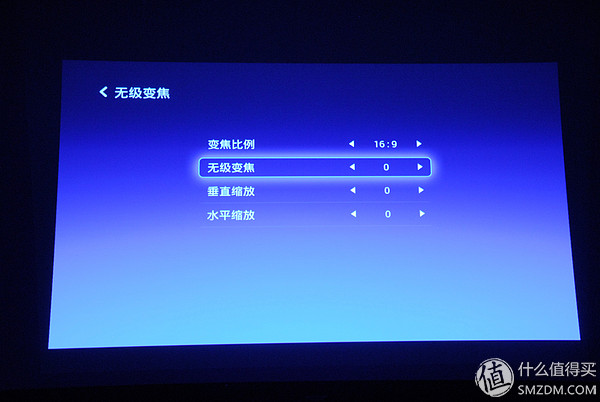
Because it is a fixed-focus lens, the zoom function is relatively pit. The stepless zoom mentioned here is digital zoom. This is well understood, that is, when all the pixels are used when the picture is maximum, when the picture exceeds the screen or the wall, the machine will compress the picture to fewer pixels. At this time, the actual resolution of the picture is even lower. .

As shown in the figure, this is the moment when the zoom is turned to the minimum screen. It can be seen that the dark blue parts around the screen are actually wasted pixels. Although the screen is compressed to an acceptable screen area, it has lost much of the physics. Pixels, it's not worth it. Therefore, users of the Z4X should not use the zoomless zoom function. If the screen is out of range, move the projector forward to make full use of all physical pixels. In addition, the focal length of the Z4X projector is slightly shorter than the widest focal length of the 40ES projector, which means that the Z4X can be placed closer to the screen to obtain larger images, which is an extremely important feature in many homes.
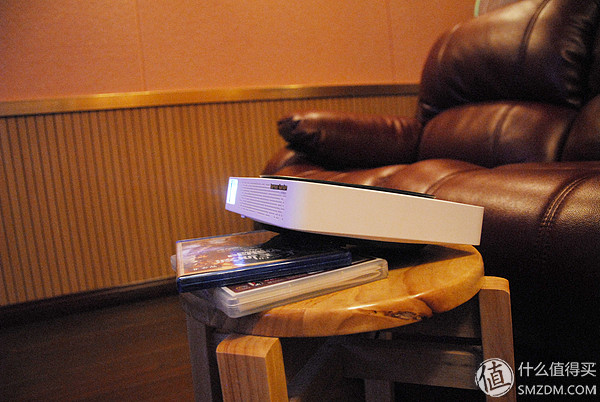
The other is trapezoidal correction. In most of the high-end projectors are equipped with lens shift function is to adjust the picture center and lens axis misalignment caused by trapezoidal distortion. As we just said, try to use the wide-angle end of the Z4X, put the projector forward as far as possible, and at the same time can not block the screen, so the typical application is such a scene. The projector is placed on the coffee table while the projector is facing the screen with an elevation angle.
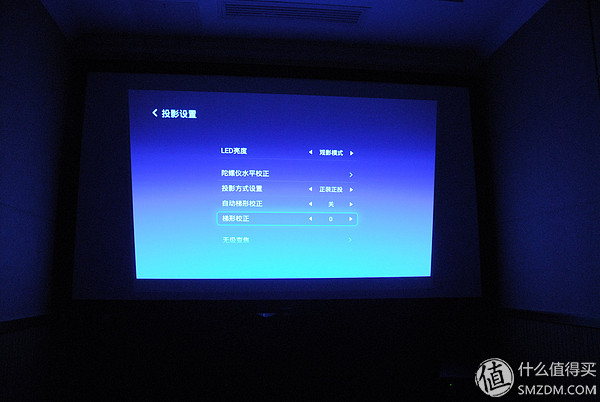
As a result, the screen on the screen appears a very obvious trapezoidal distortion, showing narrow and wide screen, looking very sad.
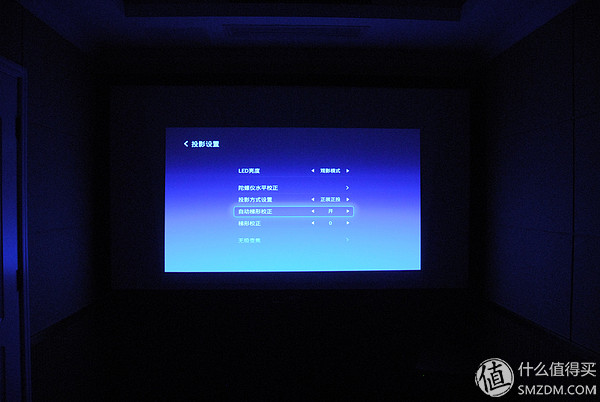
The Z4X provides an ideal smart keystone correction. It uses its own level sensor to sense the horizontal state of the projector. It also uses the digital zoom method to correct keystone distortion. The effect shown in the picture is still quite satisfactory. At the same time, the loss of pixels is not much.
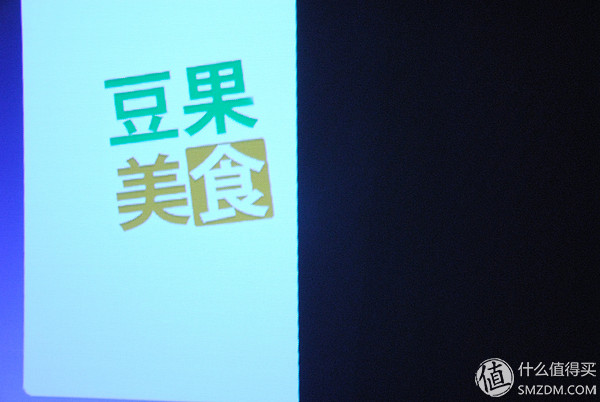
In most projectors, the digital trapezoidal correction will cause serious jaggies on the edges of the screen. After trapezoidal correction of the Z4X image at close range, it is found that the edge of the Z4X image is softer and the normal viewing distance will not obviously feel jagged. The reason for the analysis should be related to the special diamond arrangement of the DMD chip.

It can be seen that in the picture, the pixels of the DMD chip are similar to the P array of the AMOLED. But the screen does not feel very rough. The official description of Z4X also mentioned that the projector used a 0.45-inch DMD chip. Check the related technical documentation and found that the DMD chip may be similar to this product:

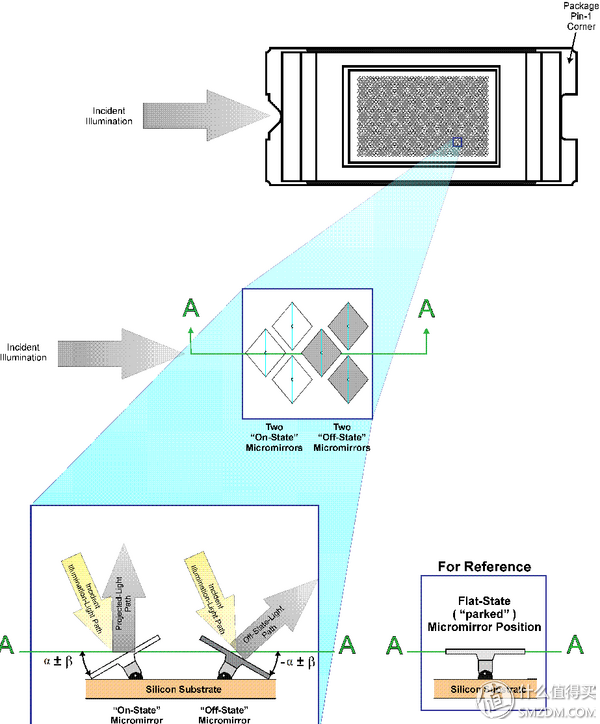
This figure is the pixel arrangement and principle of this DMD chip. In general, although the arrangement of this fast DMD of Texas Instruments has the advantage of saving pixels and saving costs, the advantage is that in the case of trapezoidal correction, the screen is unexpectedly soft and it is not easy to distinguish the sawtooth. Under ideal circumstances, it is very useful to use a feature of value.
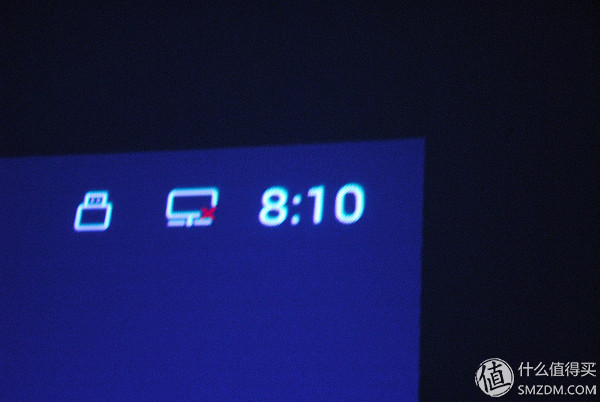
Lens corner imaging. Because the projector is closer to the screen and the screen is projected at a larger elevation angle, in the upper part of the screen, especially at the corners, the projection distance and the center of the screen are greatly different, so part of the out-of-focus is understandable. Similarly, Under normal viewing distance, this difference is not obvious.

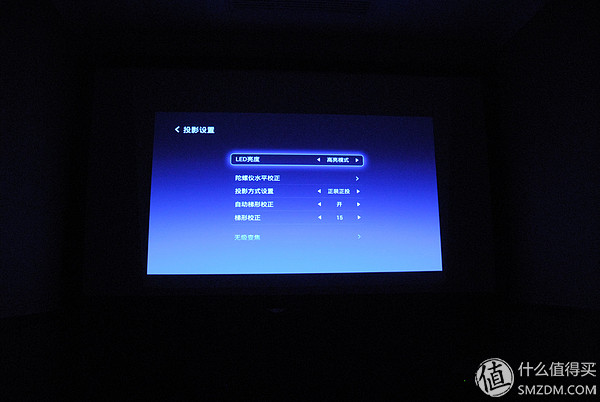
In addition, I found that there may be a bug in this version of the firmware. It is the viewing mode that is brighter than the highlight mode. Since the output power of LED bulbs is certain, the brighter ones result in decreased color saturation, pale colors, and low brightness hints. I personally do not advocate using this mode.
Large-scale projection test
When introducing many projectors, manufacturers like to say that the largest size can project 300 inches! How big is the 300-inch screen? It's about 3.8 meters high and 6.8 meters wide. This kind of screen is generally not available at home because the rooms are all about 3 meters high........but so many factories claim that their products can project a 300-inch screen, given Z4X. With a smaller body size and portability, I decided to test the projection of the Z4X under the large screen.
The description of Z3 can see 180-inch words, but Z4X does not mention the maximum projection screen. Then we also think that he has the ability to be equivalent to Z3. So I bought a piece of white cloth 2.5 meters wide and 5 meters long at Ma Yunjia. The pair was white cloth. The size of the projection screen is not too low, even if it is a simple screen to be more than 400, and I only spent 40 ... ... and the general effect is expected, it is impossible to watch for a long time, so buy a cloth back to test even if completed.
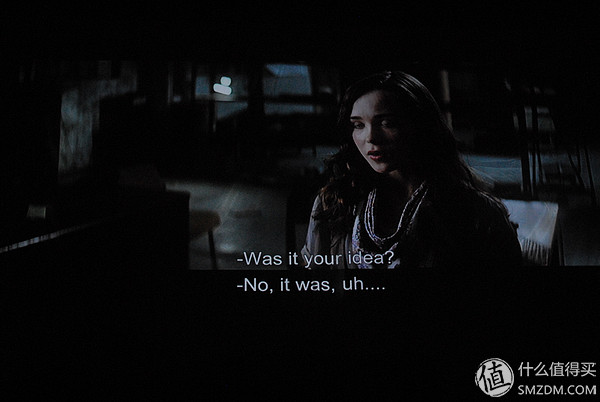
A 2.5-meter-high white cloth hangs up, and the actual size is a 200-inch projection screen. It can be seen that at this level of size, the Z4X is not very well controlled and the colors are very dark, although in the dark environment, the details of the dark parts are also very serious, and the feeling of open-air movies is almost the same.
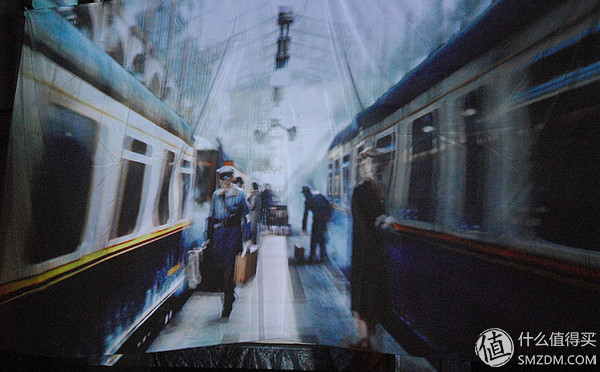
Next is a more devastating 3D effect test, you can see, in bright scenes, the screen is still very poor layering, the brightness of the screen after bringing the glasses down by a factor of 2, although the actual viewing can still feel the existence of 3D effects, But too low brightness has obviously affected the viewing.

You can find very large diamond-shaped pixels by taking close-ups of the pixels. However, people with such large screens rarely see such close distances.
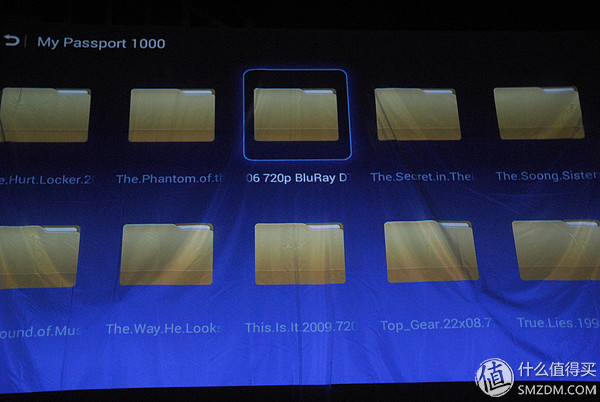
There was an extra bonus when testing large sizes. For ease of testing, only a 1T mobile hard disk was inserted behind the projector. As a result, it was found that all the videos in the hard disk can be played, and the directory structure is clear. Even the Hugo 3D Blu-ray disc above can be played smoothly. Therefore, the Z4X media playback function is worth using. Especially in the bedroom, rarely equipped with a separate Blu-ray player, hard disk or built-in hard disk direct play is the best choice.
Bedroom night test
I think that the main application of this level of projectors should be in the bedroom. The traditional TV in the bedroom has a great disadvantage. Because of the cost and layout, bedroom TVs rarely use more than 50 inches. For a friend who has a bad eye or who wants to sleep in bed watching movies, this size is far from satisfying. In addition, because the TV is hung on the wall, considering the beauty, it can not be hung high, so it is not in conformity with the normal sleeping posture, lying on the bed, the higher the screen, or even the projection on the ceiling is the best viewing From an angle, it is clear that the TV cannot meet. At the same time, because the brightness of the television is large and dazzling, it is easy to affect the sleep of the other person in the dark bedroom, and the projector with lower brightness becomes an artifact more suitable for hypnosis.
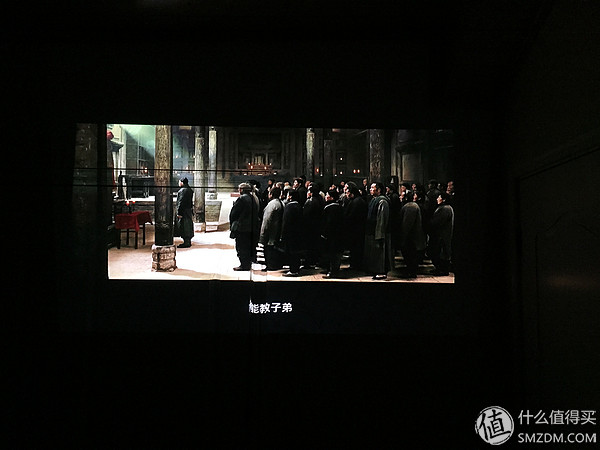
As you can see, it was projected onto the walls of the bedroom. Although the walls used wallpaper and did not use white cloth or the screen as a carrier, it did not significantly affect the viewing experience. At the same time, because the picture is small, about 90 inches or so, the picture has a good sense of color and layering, which fully meets my need for simple viewing. The larger picture makes it possible for me to see basic subtitles without glasses. This kind of experience is good for sleeping. Automatic trapezoidal correction makes the screen easy to tune and easy to use. LED light source, small heat, shut down all lights and fan noise, is a good choice for the night to sleep, if it is a traditional high-pressure mercury lamp light source, the indicator light is still flashing after shutdown, the fan will scream Blowing for a few minutes is extremely painful for sleep.
to sum up
Just like the product name “No Screen Super TVâ€, the Z4X Micro Projector can play TV functions in the bedroom and have a better experience than the traditional TV. The positioning of this product is correct. Although the theoretical data and actual performance can not be compared with the high-end projectors, but generally have their own characteristics and place of color, in this price and functional range has its own unique competitiveness. Finally, sum up the advantages and disadvantages for a reference to consider the purchase of such a projector friend.
advantage:
1. Small size, simple movement and storage
2. Automatic trapezoidal correction function is practical, easy debugging
3 excellent decoding capabilities, rich Android and APP, high playability
4 comes with speakers, and sound quality improvise enough for night use
5. As a bedroom projector, brightness and resolution sufficient
Disadvantages:
1. HuntKey's power supply is not only self-noise, but it outputs direct current with obvious current noise, which is not conducive to the stable operation of the whole machine and the safety of other equipments.
2. Without lens optical zoom function, the position is subject to certain restrictions
3. The machine does not provide tripod mounting holes, nor does it come with a rack mounting kit that cannot be installed on the headboard as advertised above
4. The HDD installation position does not support the 9.5mm standard HDD. At this stage, Hitachi's 1T 7mm HDD can only be selected.
5. The internal solder joints of the machine are rough, and it is hard to imagine how high the durability of the whole machine is.
6. Did not provide detailed instructions for entry users, not easy to learn
Finally, thank you again for the opportunity given by SMZDM. Thank you for watching. Goodbye!